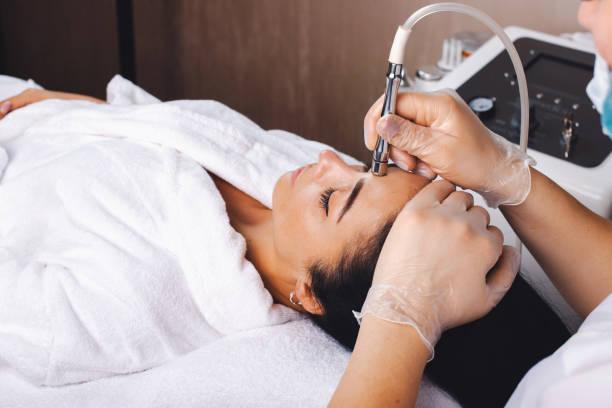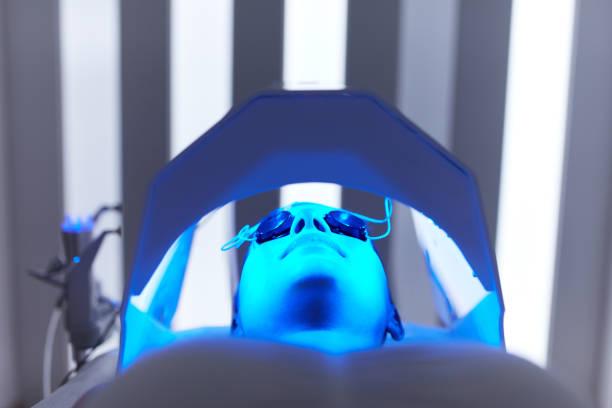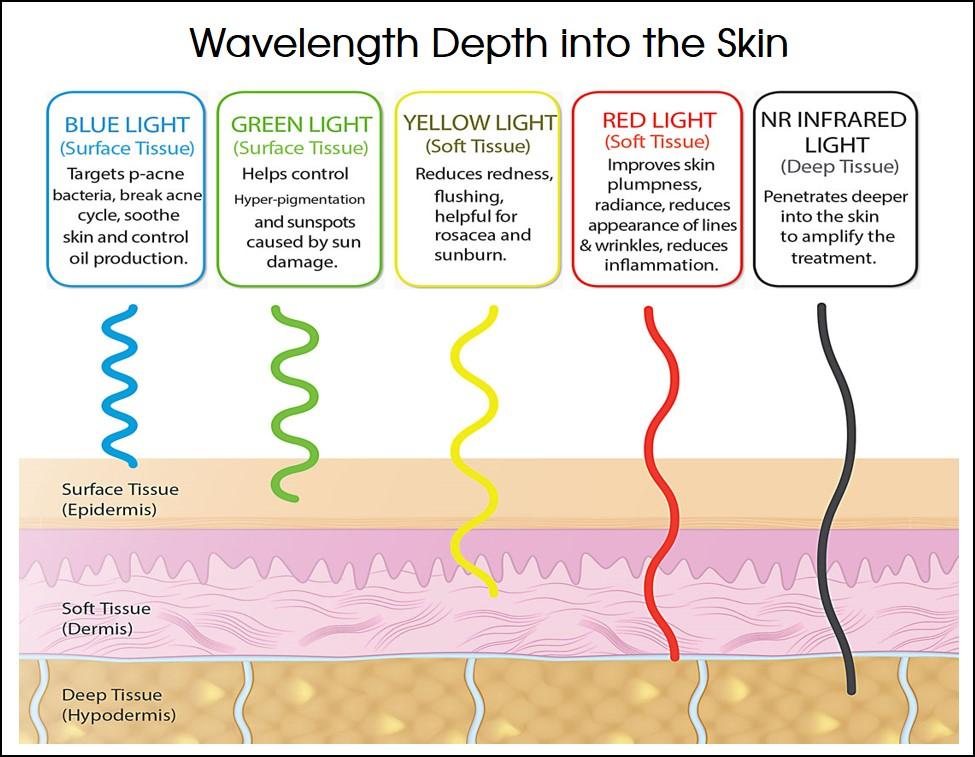
4 minute read
Overview of a Microdermabrasion Treatment
Start the treatment by moving the wand or tip in small, circular motions across the face, avoiding the eye area and any active acne lesions Start with the lowest setting and gradually increase the intensity as tolerated.
Focus on acne-prone areas: Spend extra time on areas with active acne, blackheads, or enlarged pores, but be careful not to overdo it or cause any irritation
Advertisement
Rinse and soothe the skin: Once the treatment is complete, gently rinse the skin with lukewarm water and apply a soothing, hydrating serum or moisturizer to help calm and hydrate the skin
Advise the client: Advise the client to avoid direct sunlight and to use sunscreen to protect the skin. They should also avoid using harsh exfoliants or scrubs for at least a few days after the treatment
It's important to note that microdermabrasion may not be suitable for all types of acne or skin conditions, and it's always best to consult with a skincare professional to determine the best treatment plan for each individual's needs
After the treatment, it’s important to take care of your skin properly to ensure that it heals properly and that you get the best results. Here are some tips for microdermabrasion aftercare:
Keep your skin moisturized: Use a gentle, fragrance-free moisturizer to keep your skin hydrated and prevent it from becoming dry or flaky.
Avoid sun exposure: Stay out of the sun and use broad-spectrum sunscreen with an SPF of at least 30 if you need to go outside.
Don’t use harsh skincare products: Avoid using products that contain acids or other harsh chemicals, as they can irritate your skin.
Don’t pick at your skin: It’s important not to pick at your skin or try to remove any peeling or flaking skin, as this can lead to scarring or infection.
Avoid hot showers or baths: Hot water can dry out your skin and make it more sensitive, so it’s best to avoid hot showers or baths for at least 24 hours after your treatment.
Don’t wear makeup: Avoid wearing makeup for at least 24 hours after treatment to allow your skin to heal properly.
Follow any additional instructions provided by your skincare professional: Your skincare professional may have specific aftercare instructions tailored to your skin type and the microdermabrasion treatment you received, so follow their guidance.
Blue light therapy is a non-invasive treatment that uses blue wavelengths of light to target and kill the bacteria that cause acne. Some of the benefits of blue light therapy for acne include:
Kills acne-causing bacteria: Blue light therapy effectively kills the bacteria that cause acne. The blue light penetrates deep into the skin to target the bacteria and destroy it.
Reduces inflammation: Blue light therapy can also help reduce inflammation associated with acne. It can calm the skin and reduce redness and swelling.
Non-invasive: Blue light therapy is a non-invasive treatment that does not require any incisions or injections. It is a safe and painless procedure that can be done in a dermatologist's office or at home with a handheld device.
No downtime: There is no downtime associated with blue light therapy. Patients can immediately resume their normal activities after the treatment.
Can be used with other treatments: Blue light therapy can be combined with other acne treatments, such as topical medications or chemical peels, to enhance their effectiveness.
Minimal side effects: Blue light therapy has minimal side effects. Some patients may experience mild redness or dryness after the treatment, but these side effects typically subside quickly.
Blue light therapy uses light in the blue wavelength range to kill the bacteria that cause acne, called Propionibacterium acnes. When blue light penetrates the skin, it activates a natural chemical called porphyrin the bacteria produces. The activation of porphyrin creates singlet oxygen, which destroys the bacteria.
In addition to killing bacteria, blue light therapy can also help reduce inflammation and redness associated with acne. It does this by stimulating the production of antioxidants that help protect the skin from damage caused by free radicals and other harmful substances.
Blue light therapy is often used with other acne treatments, such as topical or oral medications, to provide a more comprehensive approach to treating acne. It is considered a safe and noninvasive treatment option for acne and is often recommended for individuals who cannot tolerate or do not want to use traditional acne medications.

Blue light therapy is a non-invasive treatment that can be done at home or by a skincare professional to help reduce acne. Here are the steps to provide a blue light therapy treatment for acne:
Cleanse the skin: Begin by cleansing the skin with a gentle, noncomedogenic cleanser to remove dirt, oil, and makeup. Use lukewarm water and a soft cloth or your fingers to massage the cleanser onto the skin gently, then rinse thoroughly and pat dry.
Position the blue light device: If you use an at-home blue light therapy device, position it about 6 inches away from your face. If you have an in-office treatment, your skincare professional will position the blue light device.
Turn on the blue light device: Turn on the blue light device and follow the manufacturer's instructions. The treatment usually lasts for about 15-20 minutes.
Wear protective eyewear: Blue light can harm your eyes, so it's important to wear it during treatment.
Repeat as needed: Depending on the severity of your acne, you may need to repeat the treatment multiple times per week for several weeks to see significant results.
Moisturize and protect the skin: After the treatment, apply a lightweight, non-comedogenic moisturizer to help hydrate and protect the skin. Additionally, it's important to protect your skin from the sun by using broad-spectrum sunscreen with an SPF of 30 or higher.
The duration and settings for a blue light therapy treatment for acne can vary depending on the device used. Generally, a treatment session can range from a few minutes to 20-30 minutes, and the frequency of treatment can vary from daily to weekly sessions.
Regarding settings, following the instructions provided by the device manufacturer is recommended. This can include adjusting the intensity and duration of the treatment based on the acne's severity and the skin's sensitivity.
The optimal wavelength for blue light therapy for acne is typically between 415-420 nm. This wavelength has been shown to effectively penetrate the skin and target the acne-causing bacteria without causing significant harm to the surrounding tissue. However, it is important to note that the specific wavelength and settings may vary depending on the device used, so it is important to refer to the manufacturer's instructions.








